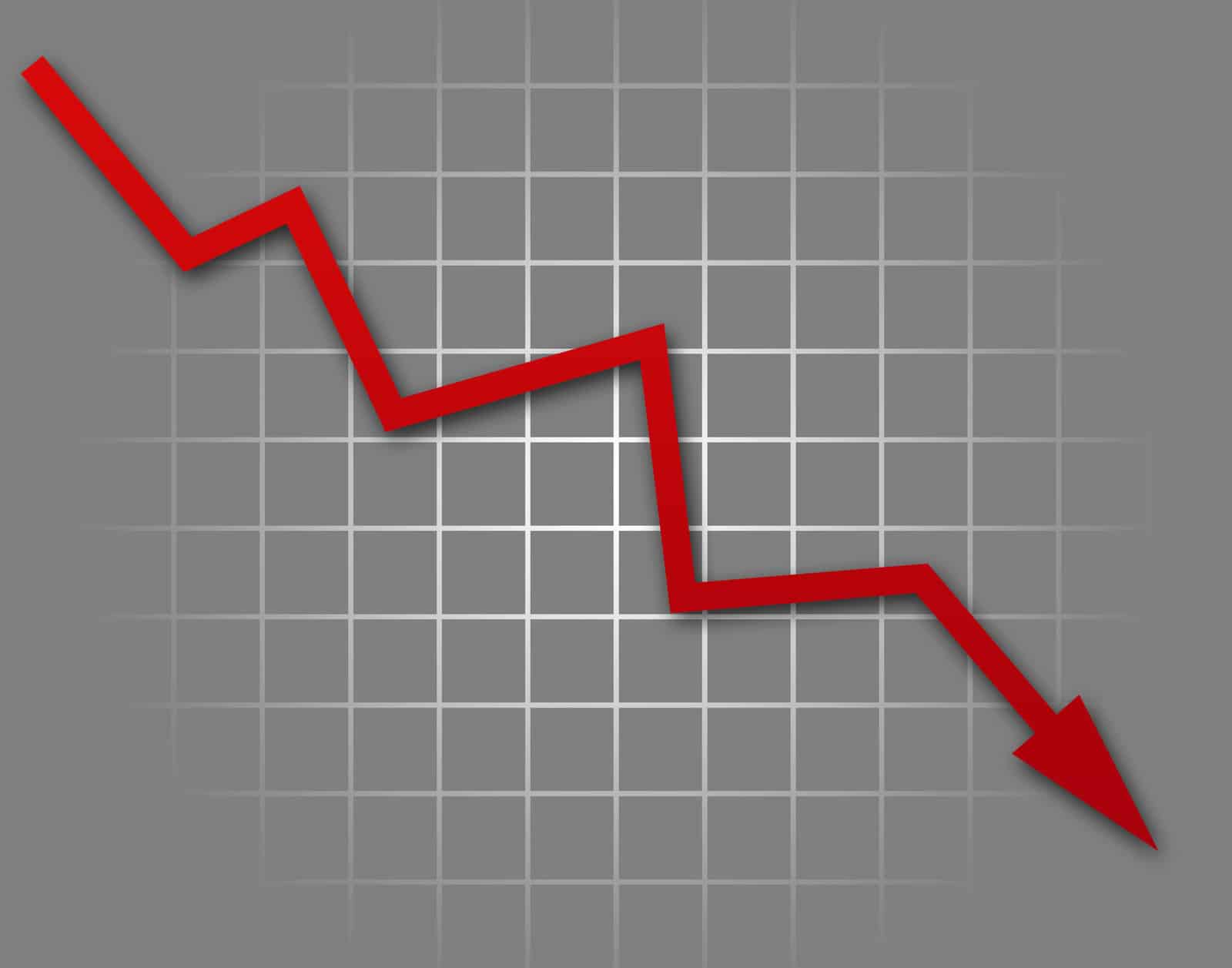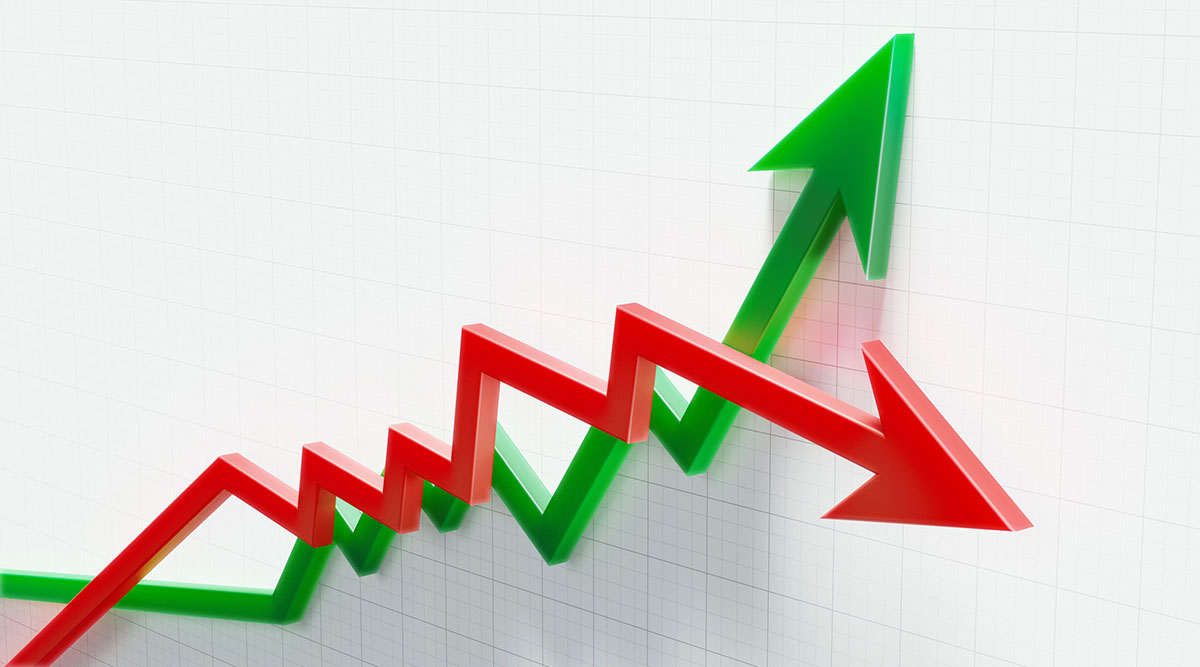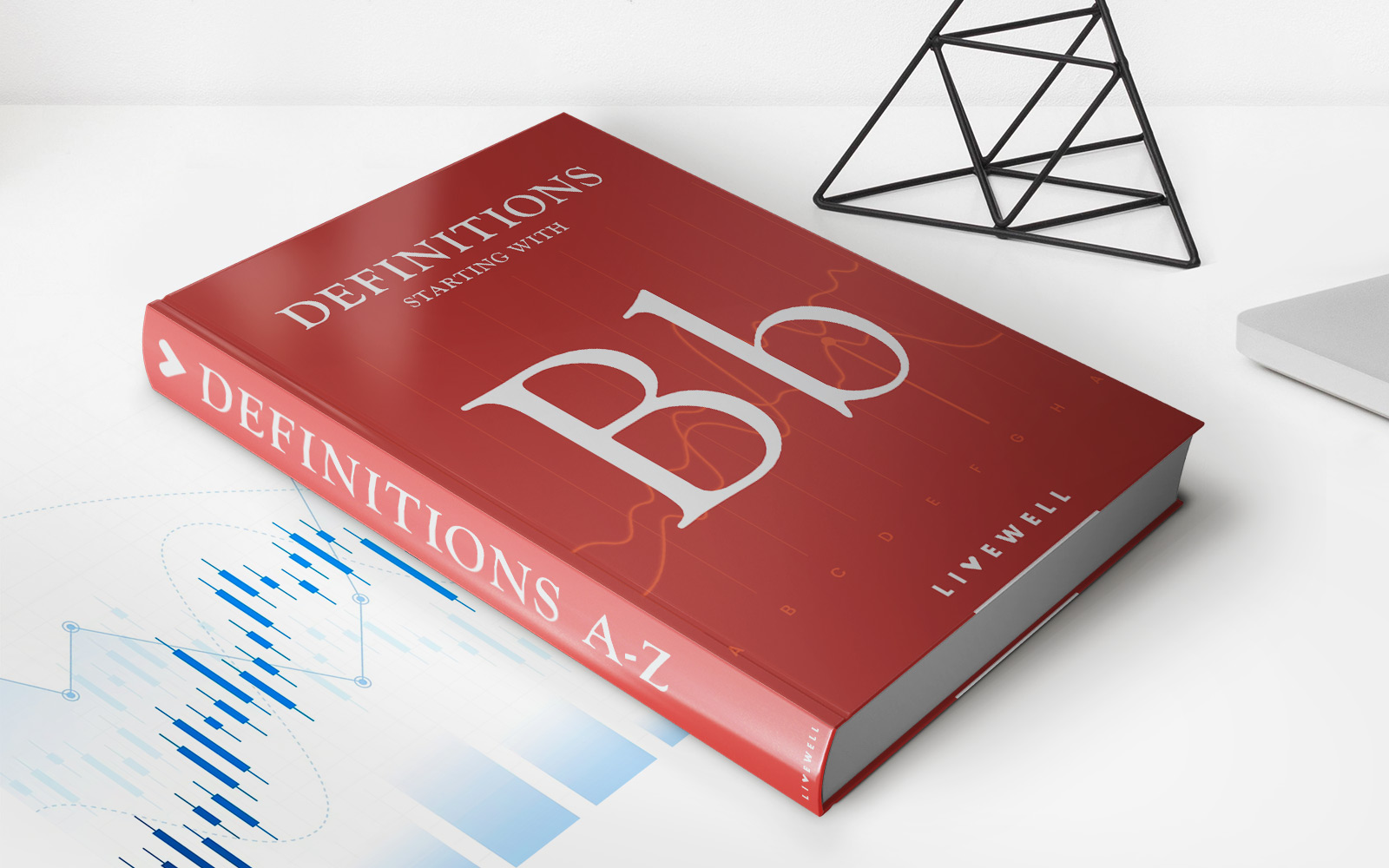

Finance
When Stocks Go Down Do Bonds Go Up?
Published: October 14, 2023
Discover the relationship between stocks and bonds in the world of finance. Find out if bonds are a safe haven when stocks decline.
(Many of the links in this article redirect to a specific reviewed product. Your purchase of these products through affiliate links helps to generate commission for LiveWell, at no extra cost. Learn more)
Table of Contents
Introduction
One of the fundamental principles in the world of finance is the inverse relationship between stocks and bonds. While stocks represent ownership in a company and offer the potential for higher returns, bonds are debt securities that provide a fixed income stream. Investors often wonder whether investing in bonds can provide a cushion when stock markets experience downturns.
In this article, we will explore the relationship between stocks and bonds, how they react to different economic conditions, and whether or not bonds can be seen as a safe haven when stocks decline.
The stock market is known for its volatility, with prices fluctuating daily based on a multitude of factors, such as economic indicators, corporate earnings, geopolitical events, and investor sentiment. On the other hand, bonds are seen as relatively more stable investments, with fixed interest payments and maturity dates.
Understanding the relationship between these two asset classes is crucial for investors to build a well-diversified portfolio and to effectively manage risk.
So, do bonds go up when stocks go down? Let’s delve deeper into the dynamics of stocks and bonds to find out.
Relationship Between Stocks and Bonds
The relationship between stocks and bonds is often described as an inverse correlation. When stock prices rise, bond prices tend to decline, and vice versa. This inverse relationship exists because the two asset classes attract different types of investors with varying risk tolerances and investment objectives.
Stocks, also known as equities, represent ownership in a company and offer the potential for capital appreciation. When the economy is growing, companies tend to generate higher profits, which in turn drives up stock prices. Investors flock to stocks during times of economic expansion, as they seek to benefit from the upside potential.
On the other hand, bonds are fixed-income securities that represent debt obligations. Bondholders lend money to governments or corporations in exchange for periodic interest payments and the return of the principal amount at maturity. Bonds are generally considered safer investments compared to stocks, as they provide a steady income stream and a higher level of certainty regarding the return of principal.
During periods of economic uncertainty or market downturns, investors tend to seek the relative safety of bonds. As a result, the demand for bonds increases, driving up their prices and causing their yields to decrease. This inverse relationship between stocks and bonds is driven by investor behavior and market dynamics.
It’s important to note that while stocks and bonds generally display an inverse correlation, it’s not always a perfect relationship. There are instances when both asset classes can decline simultaneously, especially during periods of heightened market volatility or systemic risks.
Now that we understand the basic relationship between stocks and bonds, let’s explore how they react to different economic conditions.
How Stocks and Bonds React to Economic Conditions
A key factor in understanding the relationship between stocks and bonds is how they react to different economic conditions. Economic factors play a significant role in shaping investor sentiment and influencing the performance of both asset classes.
Generally, during times of economic growth and expansion, stock prices tend to rise. This is because a strong economy typically leads to increased corporate profits, which in turn drives up stock prices. Investors see greater potential for capital appreciation in stocks in such a scenario and are willing to take on more risk for potentially higher returns.
On the other hand, bonds are influenced by interest rates and inflation. When the economy is growing, central banks often raise interest rates to control inflation. Higher interest rates can make existing bonds with lower coupon rates less attractive to investors, resulting in a decline in bond prices.
During periods of economic downturn or recession, the opposite tends to occur. Stock prices tend to decline as companies struggle to generate profits, leading investors to sell their shares. In these situations, investors may seek the relative safety and stability of bonds. As a result, bond prices may rise, driven by increased demand.
It’s important to note that the reaction of stocks and bonds to economic conditions can also be influenced by market expectations and investor sentiments. Economic indicators such as GDP growth, unemployment rates, and consumer sentiment surveys can provide insights into the health of the economy and have an impact on investor behavior.
Additionally, changes in government policies and international trade relations can also affect the performance of stocks and bonds. For example, geopolitical tensions and trade wars can create uncertainties and lead to market volatility.
Understanding how stocks and bonds react to different economic conditions is crucial for investors to make informed investment decisions and manage their portfolios effectively.
Now that we have explored the relationship between stocks and bonds and how they react to economic conditions, let’s dive deeper into the correlation between these two asset classes.
Correlation Between Stocks and Bonds
The correlation between stocks and bonds refers to the degree to which they move in relation to each other. A positive correlation suggests that both asset classes tend to move in the same direction, while a negative correlation indicates that they move in opposite directions.
Historically, stocks and bonds have exhibited a slightly negative correlation. This means that in many cases, when stocks go up, bond prices tend to decline, and vice versa. This negative correlation stems from the fact that investors often shift their allocations between these two assets based on their risk appetite and market conditions.
During times of economic growth and optimism, investors tend to favor stocks as they seek higher returns. This leads to a decrease in demand for bonds, causing their prices to decline. Conversely, during times of economic uncertainty or market volatility, investors tend to move towards the relative safety of bonds, increasing their demand and pushing up their prices.
However, it’s important to note that the strength and consistency of this negative correlation can vary over time and depend on a range of factors. For example, during periods of financial crisis or systematic risks, both stocks and bonds may experience significant declines as investors seek liquidity and safe-haven assets.
Moreover, the correlation between stocks and bonds can also be influenced by macroeconomic factors, such as interest rates and inflation. Changes in interest rates can impact bond prices more directly, while the overall economic outlook and market sentiment can drive stock market performance.
It’s worth mentioning that the correlation between stocks and bonds is not static and can change under different economic and market conditions. It’s crucial for investors to monitor and understand these dynamics to better diversify their portfolios and manage risk effectively.
Next, we will delve into the factors that can influence stock and bond prices, contributing to the correlation between these two asset classes.
Factors Influencing Stock and Bond Prices
Several factors influence the prices of stocks and bonds, contributing to the correlation between these two asset classes. Understanding these factors can provide investors with valuable insights into the performance and behavior of stocks and bonds:
- Interest Rates: Changes in interest rates have a significant impact on both stocks and bonds. When interest rates rise, bonds become less attractive as their fixed coupon payments become relatively less appealing compared to newly issued bonds with higher yields. As a result, bond prices tend to decline. On the other hand, rising interest rates can also reflect strong economic conditions, which generally benefit stocks as corporate profits increase.
- Economic Indicators: Economic indicators, such as GDP growth, unemployment rates, and inflation, can affect both stock and bond prices. Positive economic data, indicating a robust economy, can lead to higher stock prices as companies are expected to generate higher profits. Conversely, weak economic indicators can dampen investor sentiment and lead them to seek the relative safety of bonds.
- Company Performance: For stocks, company-specific factors such as earnings reports, revenue growth, and management outlooks can heavily influence stock prices. Positive company news and strong financial performance can drive stock prices higher, while poor performance can lead to declines. Bonds, on the other hand, are influenced by the creditworthiness of the issuer. Credit ratings and market perception of the issuer’s ability to repay debt can impact bond prices.
- Market Sentiment and Investor Behavior: The sentiment and behavior of investors can play a significant role in shaping stock and bond prices. Investor sentiment can be influenced by various factors, including news headlines, geopolitical events, and market trends. Positive sentiment can drive stock prices higher as investors chase returns, while negative sentiment can lead to a shift towards bonds as a safer investment option.
- Government Policies and Central Bank Actions: Government policies related to taxes, regulations, and fiscal stimulus measures can impact both stock and bond prices. Additionally, actions taken by central banks, such as interest rate changes and quantitative easing programs, can have a profound impact on bond prices. The market closely watches these policy decisions, as they can have far-reaching implications for both asset classes.
These are just a few of the many factors that can influence the prices of stocks and bonds. It’s important for investors to stay informed about these factors and their potential impact on the performance of their portfolios.
Now that we have explored the factors influencing stock and bond prices, let’s discuss the importance of diversification between these two asset classes.
Diversification Between Stocks and Bonds
Diversification is a crucial strategy in building a well-rounded investment portfolio, and it involves spreading investments across different asset classes, such as stocks and bonds. Diversifying between these two asset classes can provide numerous benefits:
- Risk Management: Investing in both stocks and bonds can help mitigate risk. Stocks are generally considered higher risk compared to bonds due to their volatility. However, bonds have a lower potential for capital appreciation. By holding a combination of both asset classes, investors can reduce their exposure to the risk of any single asset class.
- Income Generation: Bonds are known for their fixed income stream through coupon payments, while stocks can provide potential dividend income. By diversifying between stocks and bonds, investors can have a steady income stream from bonds and the potential for capital appreciation and dividend income from stocks.
- Portfolio Stability: The negative correlation between stocks and bonds helps maintain portfolio stability during market fluctuations. When stock prices decline, bond prices may rise, providing a cushion to the overall portfolio value. This can help mitigate the impact of market downturns and provide a more stable investment experience.
- Long-Term Growth: Diversifying between stocks and bonds allows investors to participate in the potential growth of the stock market while also having a more conservative allocation in bonds. This balanced approach can potentially lead to long-term growth and help achieve financial goals over time.
- Flexibility and Adaptability: Diversification provides flexibility to adapt to changing market conditions. By having a diversified portfolio, investors can adjust their allocations between stocks and bonds based on their risk tolerance, investment goals, and market outlook. This adaptability helps maintain the right balance in the portfolio across different market environments.
It’s important to note that diversification alone does not guarantee profits or protect against losses. The effectiveness of diversification depends on the specific investments chosen within each asset class and the overall mix of asset classes within the portfolio.
Diversifying between stocks and bonds should be done with careful consideration of individual circumstances, risk tolerance, and investment objectives. Consulting with a financial advisor or investment professional can provide personalized guidance in constructing a well-diversified portfolio.
Now, let’s wrap up our discussion.
Conclusion
In conclusion, the relationship between stocks and bonds is a fundamental aspect of the financial landscape. While stocks are typically associated with higher risk and potential for capital appreciation, bonds are considered safer investments with fixed income streams. Understanding the dynamics between these two asset classes is crucial for investors seeking to build a well-diversified portfolio.
Historically, stocks and bonds have exhibited a slightly negative correlation, meaning that when stock prices rise, bond prices tend to decline, and vice versa. However, this correlation can vary under different economic and market conditions. Factors such as interest rates, economic indicators, company performance, investor sentiment, and government policies all influence the performance and behavior of stocks and bonds.
Diversification between stocks and bonds is an essential strategy to manage risk and optimize portfolio performance. By spreading investments across different asset classes, investors can potentially achieve a balance between income generation, long-term growth, and risk management. Diversification also provides flexibility and stability to navigate changing market conditions.
It is important for investors to consider their individual circumstances, risk tolerance, and investment goals when determining the ideal allocation between stocks and bonds. Consulting with a financial advisor or investment professional can provide personalized guidance to construct a well-diversified portfolio that aligns with their specific needs.
In summary, the relationship between stocks and bonds is complex and influenced by various factors. Investing in both asset classes and diversifying can help mitigate risk, provide stability, and potentially achieve long-term growth. By understanding the dynamics between stocks and bonds, investors can make more informed decisions and navigate the ever-changing financial landscape effectively.
Thank you for joining us on this exploration of the relationship between stocks and bonds.














